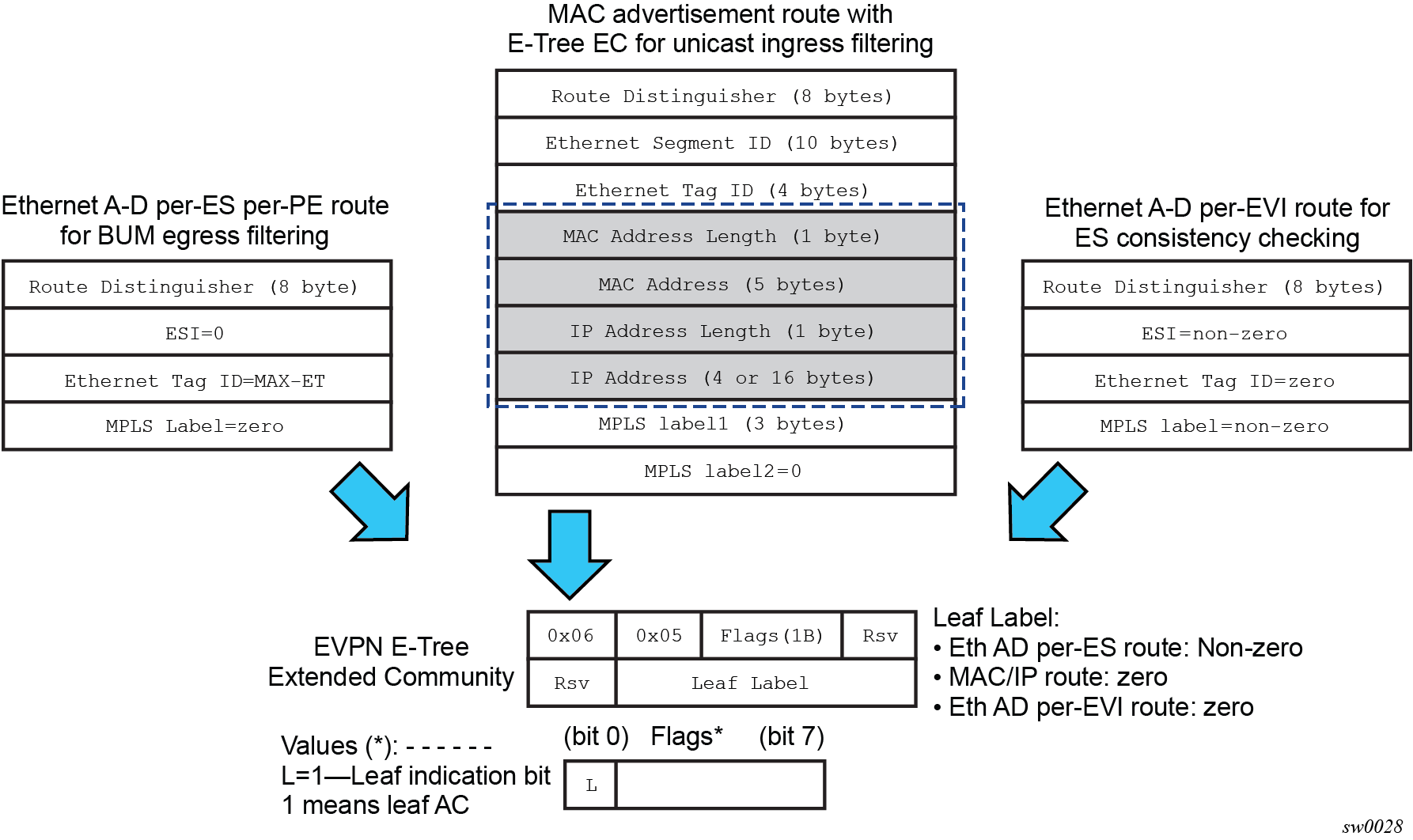BGP EVPN control plane is extended and aligned with IETF RFC 8317 to support EVPN E-Tree services. Figure 1 shows the main EVPN extensions for the EVPN E-Tree information model.

The following BGP extensions are implemented for EVPN E-Tree services.
An EVPN E-Tree extended community (EC) sub-type 0x5 is defined. The following information is included.
The lower bit of the Flags field contains the L bit (where L=1 indicates leaf AC).
The leaf label contains a 20-bit MPLS label in the high-order 20 bits of the label field. This leaf label is automatically allocated by the system or statically assigned by the evpn-etree-leaf-label <value> command.
-
The new E-Tree EC is sent with the following routes.
-
AD per-ES per PE route for BUM egress filtering:
Each EVPN E-Tree capable PE advertises an AD per-ES route with the E-Tree EC, and the following information:
-
Service RD and route-target
If ad-per-es-route-target evi-rt-set is configured, then non-zero ESI AD per-ES routes (used for multi-homing) are sent per the evi-rt-set configuration, but E-Tree zero-ESI routes (used for E-Tree) are sent based on the default evi-rt configuration.
-
ESI = 0
Eth Tag = MAX-ET
MPLS label = zero
-
-
AD per-EVI route for root or leaf configuration consistency check as follows:
-
The E-Tree EC is sent with the AD per-EVI routes for a specific ES. In this case, no validation is performed by the implementation, and the leaf indication is only used for troubleshooting on the remote PEs.
-
The MPLS label value is zero.
-
All attachment circuits (ACs) in each EVI for a specific ES must be configured as either a root or leaf AC, but not a combination. In case of a configuration error, for example, where the AC in PE1 is configured as root and in PE2 as leaf AC, the remote PE3 receives the AD per-EVI routes with inconsistent leaf indication. However, the unicast filtering remains unaffected and is still handled by the FDB lookup information.
-
-
MAC or IP routes for known unicast ingress filtering as follows:
-
An egress PE sends all MAC or IP routes learned over a leaf AC SAP or spoke SDP with this E-Tree EC indicating that the MAC or IP belongs to a leaf AC.
-
The MPLS label value in the EC is 0.
-
Upon receiving a route with E-Tree EC, the ingress PE imports the route and installs the MAC in the FDB with a leaf flag (if there is a leaf indication in the route). Any frame coming from a leaf AC for which the MAC destination address (DA) matches a leaf AC MAC is discarded at the ingress.
-
If two PEs send the same MAC with the same ESI but inconsistent root or leaf AC indication, the MAC is installed in the FDB as root.
-
-